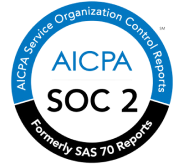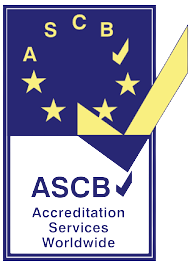Table of Content
- Introduction
- Examples of Automation of HR Processes
- Role-based automation in your workflow engine
- Synching of the leave and absence data automatically
- Seamless integration of payroll with other core functions
- Automated follow-up emails to candidates and employees
- Generating job descriptions automatically with a click
- Benefits of AI Technology in HR
- Conclusion
- FAQs on Automation of HR Processes
Introduction
Automation of HR processes empowers HR executives, managers, and leaders to be more efficient in their daily tasks. They no longer have to make the effort to carry out their mundane tasks themselves. The AI-enabled HRIS (human resource information system) or the ultimate HRMS suite helps the HR staff to improve their pre-hire to post-retire charges and turnaround time.
However, to get the knowledge and implement the same, read the post below. We will provide you with examples and perks there.
Also read: How Do You Embrace Automation in HR in the Philippines?
Want to skip the post?

Examples of Automation of HR Processes
Role-based automation in your workflow engine
One of the ways to bring automation to your daily HR tasks is to set up automated role-based approvals and workflow engines. This makes the task of the HR admin, leader, or manager easier. They eliminate themselves from following up manually with each concerned person to close the loop on the tasks. Rather, the request and claims, as an example, get instant notification to the concerned manager for completing the chain of approval.
To enable this technology in HR, you can trust and implement our HRM software in your firms.
Synching of the leave and absence data automatically
Sync your leave and absence data easily within the virtual biometric and attendance management system regularly. The system of a smart HRIS (Human resource information system) allows your employees to update their attendance data without you having to intervene. They can check the data that is still left to be synched in their calendar or attendance sheet. They get the option to click the Sync button to do the same and eliminate your need to do it manually for them.
Seamless integration of payroll with other core functions
One of the smartest ways for automation of HR processes is to sync the payroll with other important modules and their datasets. This means with uKnowva we offer you seamless integration of payroll with attendance, leaves, holidays, daily punch-in/punch-out records, incentives, claims, pending deductions, etc.
This seamless integration ensures that the salary or wage calculations of an employee or a registered user are on time. The payroll or reporting manager does not chase the person to fill their claims, incentives, or check their total gross monthly or weekly payments.
The system is intelligent enough to integrate the data from all important mechanisms and ensure to send out an update payslip without manual errors. This saves 1000s of hours for payroll managers and protects them from over or underpaying a wage worker or a full-time employee.
Automated follow-up emails to candidates and employees
Recruiters and other HR specialists can send follow-up messages to their employees and candidates. The chain of reminders can be set in the system, for example, for the candidate to complete their KYC and get onboarded on time with the organisation.
Generating job descriptions automatically with a click
AI Suggest allows HR managers to generate complete job descriptions with top-notch skill sets, interview questions, probation confirmation questions, etc., data points to provide a seamless candidate experience.
This technology in HR is much needed for busy HR professionals to squeeze 15 hours of productivity into 15-30 seconds.
Benefits of AI Technology in HR
- Improved candidate experience
By automating pre-boarding and onboarding tasks with CV Parser, AI Suggest, or offer letter management, recruiters enjoy the free time to create positive rapport with talented candidates. They can send them automated reminders through our HRIS system while saving enough time to prepare for shortlisting the best candidate and onboarding them on time within the same deadline.
- Elevating hiring efficiencies
Automating hiring processes helps recruiters and talent hunters lock in the best candidate for the company on time. They can integrate their organisation’s career page with other online job portals. This saves their effort in posting one vacancy on multiple channels. So, the CV received from one channel will be stored in the candidate pool of the HRIS system. This improves their hiring process, efficiency, and TAT to close the hunt, offers, and negotiations on time.
- Attaining operational excellence
HR managers get better at their jobs and roles which are increasingly becoming complex by the hours with the onslaught of the information and change in the job market trend they have to deal with. This is possible only when they invite and welcome automation of HR processes with safety, security, and data privacy.
- Automating mundane and repetitive HR tasks
Automating mundane tasks is one of the sure-short benefits of allowing automation and AI to enter your workplace. This automation helps HR managers to have time for more humanised collaborations. They can make the workplace more meaningful when they get to automate their boring tasks of the day without compromising the quality or output.
- Data-driven decision-making is way fast and efficient
One of the perks of using the latest tech in HR is being more efficient and proficient with people analytics and data-driven decision-making. HR managers can predict the trend in attrition of a certain department or the entire organisation with the past data available in the analytics. Smart analytics also gains the power, over time, to predict and prescribe the best possible course of action to prevent uncertainties from occurring in the workplace. That means now HR managers, CHROs, or senior leaders don’t have to manually sift the data when they have the personalised dashboard to do so for them at their fingertips.
Conclusion
We hope that you got the latest knowledge on the automation of HR processes from the blog copy above. Read through the real-world implementation examples afterwards and end the copy with the perks of implementing the best, automated, and intelligent HRIS tech in your workplace. This allows you to take charge of your professional life as an HR and make smarter decisions on the move for your team and the entire organisation as a strategic partner to the C-suite team.
FAQs on Automation of HR Processes
- What is the purpose of automating HR processes within an organisation?
The automation of HR processes aims to streamline and enhance efficiency in tasks such as recruitment, onboarding, and payroll, allowing HR professionals to focus on more strategic activities.
- Which HR processes can be effectively automated, and which ones still require human intervention?
Routine tasks like data entry, calculation of the pay to be disbursed, and benefits administration can be automated, while complex decision-making and employee relations often require human involvement.
- How does HR automation contribute to reducing errors and improving data accuracy?
Automation minimises manual data entry, reducing the likelihood of errors and ensuring that employee records and other HR information are accurate and up-to-date.
- Can automation in HR help with compliance and regulatory requirements?
Yes, HR automation can assist in ensuring compliance by automating recordkeeping, generating reports, and helping HR teams stay informed about changing regulations.
- How does the implementation of HR automation impact the employee experience?
Automation can improve the employee experience by speeding up processes, reducing paperwork, and enabling self-service options for tasks like leave requests and benefits enrollment.












